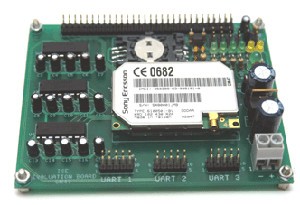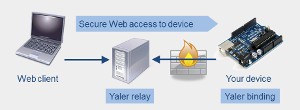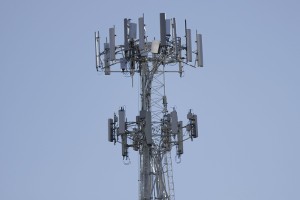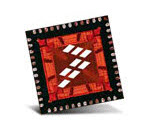As the year progresses it seems that we are increasingly exposed to new Internet-of-Things platforms, and the latest to take our attention is myDevices – a platform-as-a-Service for Internet-of-Things applications.
The myDevices platform is a device-agnostic ecosystem for the connected world of today. With myDevices you can securely and efficiently connect a wide range of devices while capturing and translating critical business data to support and engage customers more effectively.
This service is a powerful combination of a customisable IoT platform and a professional services ecosystem provided by myDevices to support the platform. Their ecosystem is able to provide tailored solutions to suit the specific needs of businesses that manufacture, support or sell connected devices.
And it is a complete platform – by offering an end-to-end IoT solution, myDevices offers easy integration with a range of existing systems and products across multiple industries. It’s also an agile IoT platform that enables you to bring connected products to market securely and with faster time to market.
Businesses want to take advantage of the IoT, but they don’t necessarily know how to do it, and many are at a loss when it comes to getting started. Enterprise users could build their own IoT solution from the ground up, but such an undertaking involves a large commitment of time and cost, taking time and resources away from core operations.
Many enterprises have questions about how and when to use IoT solutions, where these solutions fit into business operations, and how they can not only collect data but also act on it and generate business value. For many businesses, an IoT technology platform itself isn’t quite enough to deliver a valuable result.
This is the market that myDevices intends to serve with their Internet-of-Things Platform as a Service. The myDevices platform aims to make it easy for businesses to come on board, and to succeed, with the Internet of Things.
Manufacturers of connected products require a solution that not only enables communication from manufacturers to devices but also enables the business to manage relationships with customers and their connected devices. This allows businesses that manufacture, sell and support connected devices and services to efficiently connect products, manage data, and interact with their customers.
The myDevices platform features a customer-facing front-end as well as including data collection, analytics and engagement tools at the back-end. These back-end tools allow businesses to evolve their IoT products and services at the same time they’re improving customer service, improving marketing directly to their customers, and collecting useful and actionable data on their products.
 One of the key differentiating features of the myDevices ecosystem is the professional services that are provided in tandem with the IoT technology platform. Before a solution is presented, specific business challenges are identified for each customer.
One of the key differentiating features of the myDevices ecosystem is the professional services that are provided in tandem with the IoT technology platform. Before a solution is presented, specific business challenges are identified for each customer.
A secure IoT solution is then created by myDevices, including software, UI design, hardware, tools and analytics, user-facing components and whatever else may be applicable to best meet the customers’ requirements. It is built to scale and evolve as the business grows. This is an IoT solution tailored to suit specific business needs, rather than a “one size fits all” solution.
Customised solutions from myDevices allow companies that manufacture, sell and support connected devices to efficiently connect products, manage data, and interact with their customers. The myDevices platform is the first of its kind to offer both a back-end connected device solution for enterprise users and a connected front-end solution to suit the needs of end users.
This platform is device-agnostic, unlike some other IoT solutions on the market at present, and it can be connected with essentially anything – for example sensors, connected appliances, wearable devices, smartphones, PCs and consumer electronics. You can also use development tools and platforms such as the Arduino and the Raspberry Pi, and easily integrate these with the myDevices platform.
The front-end component is designed to interface with end users, while the back end captures and translates business data. The myDevices platform then uses this data to generate visualisation and real-time insights. The myDevices platform provides a range of customer and enterprise-focused interfaces, including marketing and business intelligence tools for enterprise users, an analytics suite linked to a marketing engine, and a strong emphasis on data visualisation.
myDevices has been designed with security in mind at all layers of the architecture, using secure protocols for all data communications, keeping traffic encrypted as it goes through the network. This includes the use of HTTPS for all network communications.
Through a combination of front-end and back-end features that run on any device, myDevices enables companies to analyse the usage of their connected devices and the behaviour of their consumers so they can then tailor their marketing and improve customer lifecycle management.
At this point we feel that myDevices could be one of many solutions to your Internet-of-Things needs. However this is only one of many options for you to consider.
Here at the LX Group we have end-to-end experience and demonstrated results in the entire process of IoT product development, and we’re ready to help bring your existing or new product ideas to life. Getting started is easy – click here to contact us, telephone 1800 810 124, or just keep in the loop by connecting here.
LX is an award-winning electronics design company based in Sydney, Australia. LX services include full turnkey design, electronics, hardware, software and firmware design. LX specialises in IoT embedded systems and wireless technologies design.
Published by LX Pty Ltd for itself and the LX Group of companies, including LX Design House, LX Solutions and LX Consulting, LX Innovations.








